Do Great Pyrenees Shed?
Whether you just brought home a Great Pyrenees or are contemplating it, one thing is certain—these friendly dogs have a lot of fur to make doggie hugs extra special.
But to the passersby, it seems all that hair would require lots of upkeep. So, do Great Pyrenees shed?
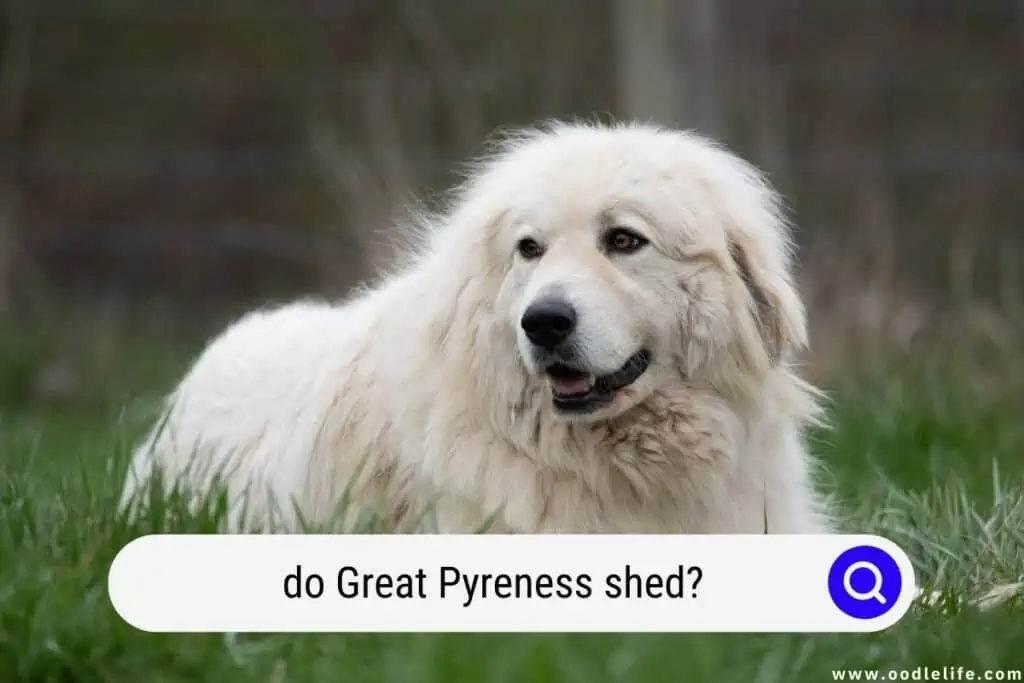
Yes, Great Pyrenees shed a moderate amount. They drop fur throughout the year and require weekly brushings, but they don’t need to see a groomer regularly like breeds such as the Poodle.
I’m a huge fan of the Great Pyrenees and will help you understand how much shedding you can expect from them, along with tips for preventing excess shedding.
The Basics of a Great Pyrenees’ Coat
The Great Pyrenees looks like a big shedder, given its thick double-layer coat. And that initial reaction isn’t wrong; the American Kennel Club ranks the Great Pyrenees as a three out of five on the shedding scale.
If that makes you leery about the amount of fur you’ll find in your home, consider this: Dalmatians rate a four out of five, being higher shedders than the Great Pyrenees.
Needless to say, looks can be deceiving, given that Dalmatians have short fur and Great Pyrenees have dense medium-length fur.
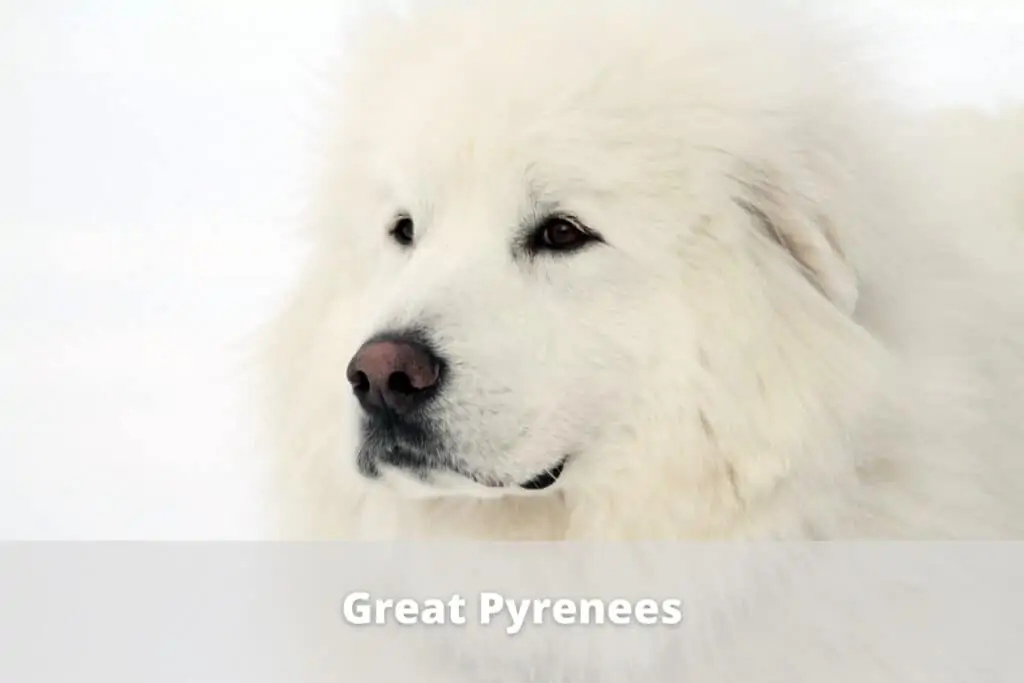
Seasonal Shedding
The Great Pyrenees has a double-layer coat, which is two sets of fur that grow at different lengths and operate differently.
The top coat has longer, more sparse hairs. Its purpose is to deter dirt, snow, and water from reaching the Great Pyrenees’ skin. In contrast, the undercoat is softer, shorter, and grows faster and thicker than the topcoat.
Undercoats offer the Great Pyrenees insulation from the cold during the winter and heat during the summer. For this reason, these dogs are seasonal shedders, losing their undercoat in the spring and fall and growing a new one in preparation for the change of seasons.
So, you can expect to find extra fur around your house in the spring and fall, and you’ll need to brush your dog more frequently during those times of the year. But the reality is that Great Pyrenees shed year-round, so there’s never a time when you won’t be giving your vacuum a workout.
Are Great Pyrenees Hypoallergenic?
No, Great Pyrenees aren’t hypoallergenic. Hypoallergenic dogs, such as the Poodle, shed less, meaning there isn’t as much allergy-inducing dander flying around a home.
For this reason, I discourage you from buying a Great Pyrenees if anyone in your home is allergic to dogs. And if they are, it’s best for them to spend time around a hypoallergenic breed before making it their pet, given that some people still have allergic reactions to hypoallergenic dogs.
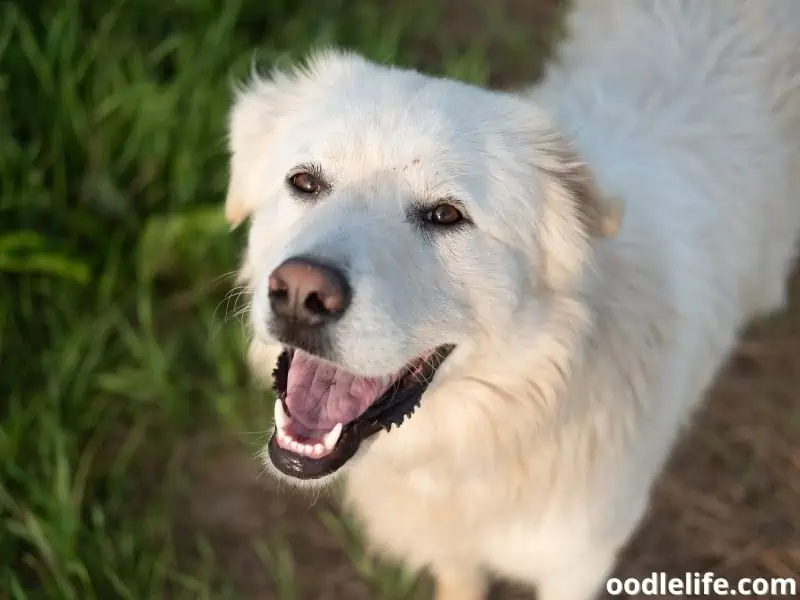
Natural Reasons Why Great Pyrenees Shed More
If you notice your Great Pyrenees is shedding more than usual, there could be a perfectly normal reason for this. The most common reasons for natural excess shedding include:
- Pregnancy
- Nursing
- Change of seasons
- Puppies losing their puppy coat
I won’t hone in on the change of seasons since we already discussed that. But if you have a pregnant or nursing female Great Pyrenees, she might shed extra due to a hormonal imbalance. Once this period passes, she’ll return to her regular shedding ways.
Puppies also undergo excess shedding as they transition into adulthood. The process often begins when a puppy is four to six months old; in some cases, it can happen up until they’re one year old.
Tips To Reduce Excess Shedding in the Great Pyrenees
Now that you know the answer to “Do Great Pyrenees shed?” is yes, below are some ways to reduce unnecessary shedding for your pet.
1. Feed High-Quality Food
A lack of or an imbalance of nutrients is one of the leading causes of unnecessary excess shedding in dogs. I know that money can get tight in some households, but try not to make your Great Pyrenees’ food part of the items you try to save money on.
In addition to splurging on high-quality dog food, check to make sure the food is appropriate for your dog’s age. For example, Great Pyrenees puppies require a minimum of 22.5% dry matter protein, whereas adult dogs need at least 18%.
If your Great Pyrenees doesn’t receive the proper nutrition for their age and size, their body will divert nutrients that formerly went to maintaining their hair follicles to more essential parts of their body, such as the heart and brain.
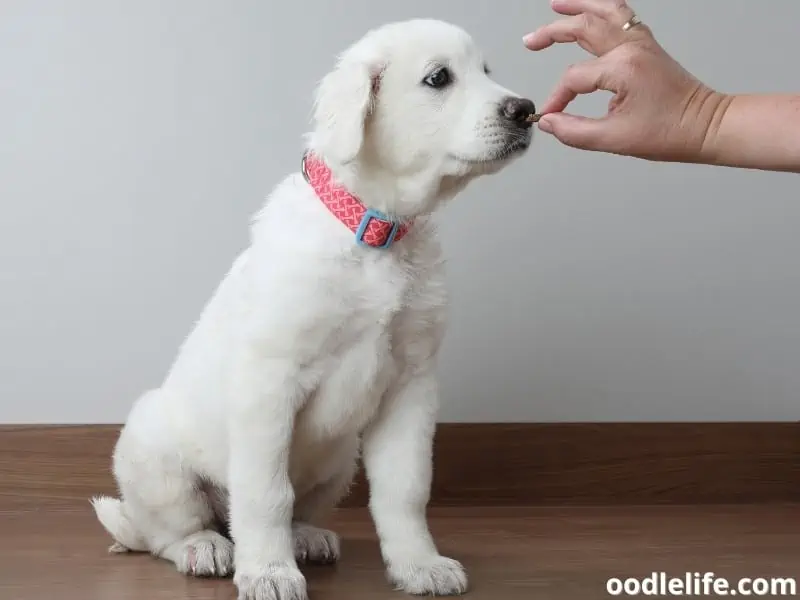
2. Supplement With Fish Oil
All Great Pyrenees can benefit from having fish oil in their diet, even if they’re not experiencing excessive shedding.
Fish oil supports the coat by encouraging natural oil production. The result is less itchy and flaky skin and stronger hair follicles to prevent fur from dropping. As a side benefit, you’ll notice that your dog’s coat becomes softer to the touch.
Some other benefits to including fish oil in your Great Pyrenees’ diet include:
- Improves heart health
- Reduces allergy symptoms
- Prevents joint pain
You can give your Great Pyrenees fish oil supplements in the form of chewable tablets or by pouring the oil over their food.
3. Keep Them on Anti-Flea Medication
Fleas are tiny external parasites that survive by feeding on animal and human blood.
These insects cause extreme discomfort for Great Pyrenees, given that their bites create irritation and itchiness. As a result, you may notice your dog losing spots of hair in patches across their body as they itch.
The good news is that fleas are mostly preventable with anti-flea medication.
To be fair, fleas aren’t the only external parasite that can cause hair loss. Mites are another culprit, which causes the itchy and painful condition called mange.
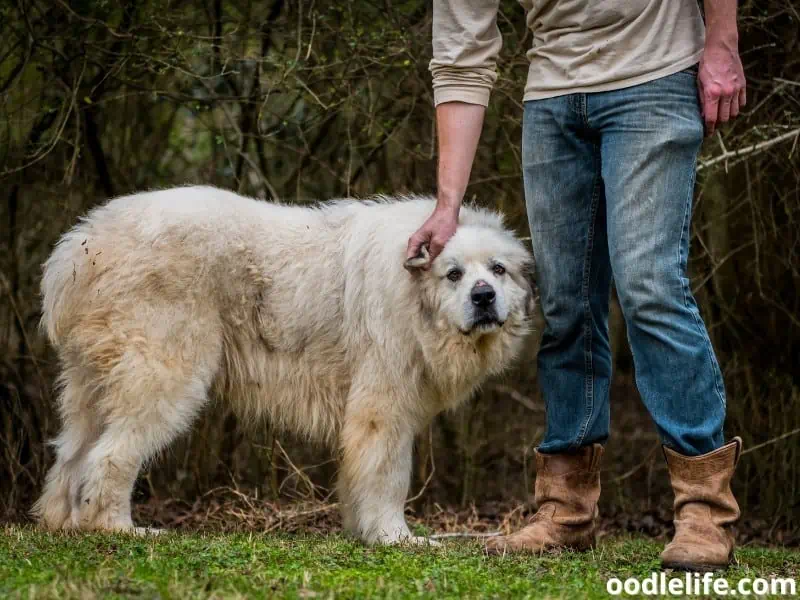
4. Reduce Their Stress
Research shows that a stress hormone in mice can impair the cells required for hair growth. So, if you’ve noticed that your hair falls out more during a stressful time in your life, you’re not crazy.
It just so happens that your Great Pyrenees can also experience fur loss due to stress.
Many situations can stress your pet, and you’ll have to observe them to understand what they are. That can be particularly challenging for people who adopted a Great Pyrenees with a history of abuse.
When you identify what makes your Great Pyrenees stressed, do your best to change their environment to make it more comfortable for them, especially if it’s a long-term stressor they experience at home.
5. Check Their Skin
There’s a lot of fur covering the skin of a Great Pyrenees, so most owners naturally don’t spend much time looking at their dog’s skin.
Nevertheless, it’s easy for trapped water to spark fungal growth or a small scrape to turn into a bacterial infection. Both conditions can cause your Great Pyrenees’ fur to fall out.
So, if you notice them losing hair in a particular spot, give their skin a good look. If you see any redness, swelling, or flakiness, take them to the vet. Fungal and bacterial skin infections are usually easy to treat with medication.
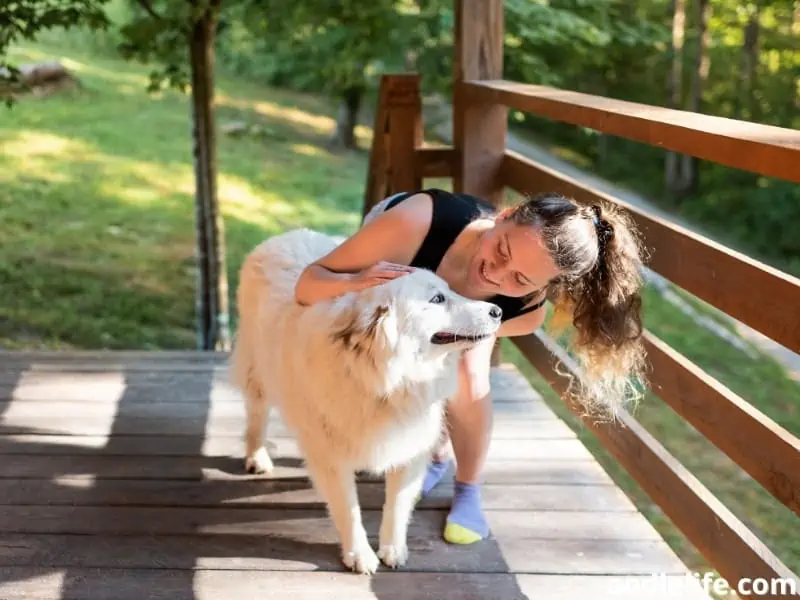
Grooming Requirements for Great Pyrenees
Believe it or not, the great Pyrenees requires less grooming than dogs like the Maltese, which need frequent trips to the groomer to keep their hair trimmed.
Nevertheless, I recommend brushing your Great Pyrenees at least a few times per week. During their seasonal shedding in the spring and fall, daily brushing is best.
Since the Great Pyrenees has long and thick fur, it’s essential to purchase a brush with teeth that are wide enough to penetrate to the base of the fur. A curved-bristle metal slicker or a grooming rake are ideal.
You can also use a wide-toothed stainless steel comb for finishing touches to make your dog look extra fluffy.
It isn’t necessary to bathe the Great Pyrenees often, as their natural oils are essential for keeping their hair follicles strong. But when you decide to wash them, ensure you thoroughly dry them afterward.
Otherwise, the moisture trapped beneath their coat could cause a bacterial or fungal infection.
The Bottom Line
When most people see a Great Pyrenees, they don’t ask, “Do Great Pyrenees shed?” but comment on how much they must shed. And while it’s undoubtedly that Great Pyrenees shed more than some dogs, they don’t shed as much as certain shorter-hair breeds that seem like they should shed less.
The Great Pyrenees is a sweet, loving dog. Personally, I think owning one is well worth it despite having to do a bit of extra vacuuming.